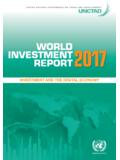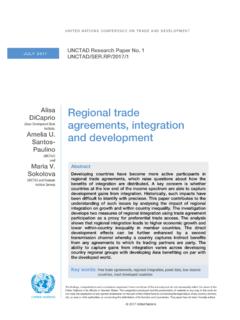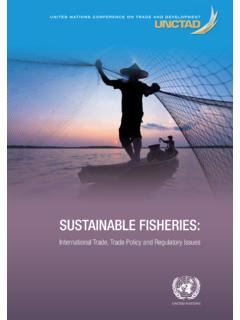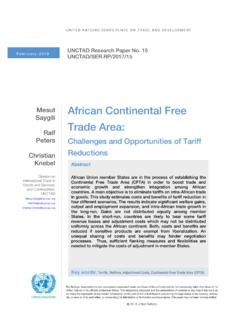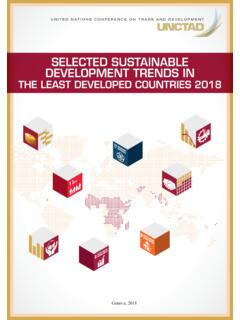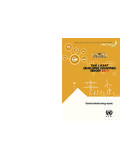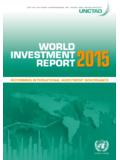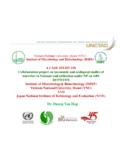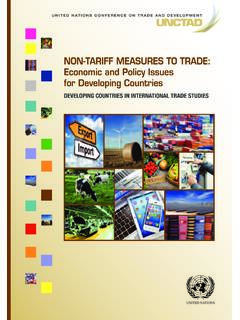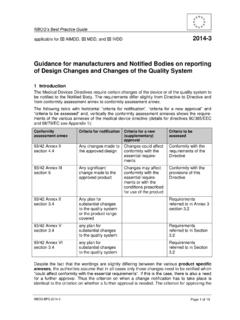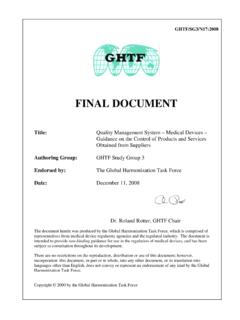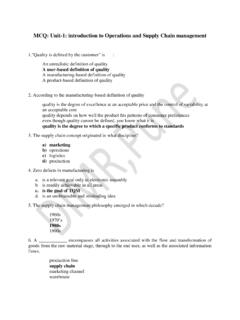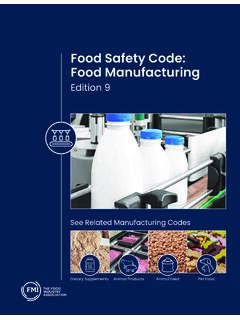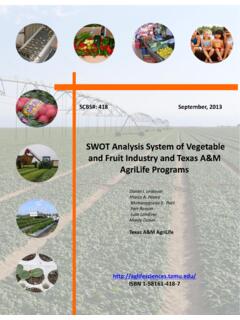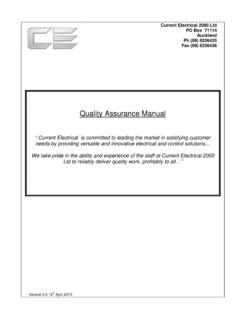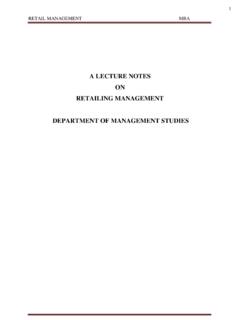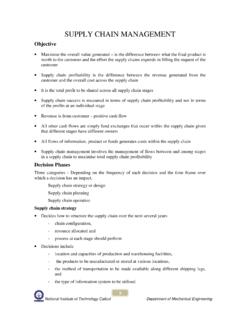Transcription of SAFETY AND QUALITY OF FRESH FRUIT AND VEGETABLES
1 SAFETY AND QUALITY OF FRESH FRUIT AND VEGETABLES : A TRAINING MANUAL FOR TRAINERS UNITED NATIONS New York and Geneva, 2007 ii UNCTAD/DITC/COM/2006/16 iii CONTENTS Chapter Page v About this Manual .. vi Use of this vii ix xi Important xiii I. INTRODUCTION TO FOOD SAFETY AND QUALITY . 1 Introduction.
2 1 MODULE 1: QUALITY Assurance and Food SAFETY .. 2 MODULE 2: QUALITY Attributes, Food Standards, Grading and 6 MODULE 3: Produce Deterioration, Spoilage and Post-harvest Losses .. 10 References .. 14 II. FOOD SAFETY OF FRESH FRUITS AND VEGETABLES .. 17 Introduction .. 17 MODULE 1: SAFETY Hazards in FRESH Produce: Biological, Chemical and Physical .. 17 MODULE 2: FRESH Produce, Foodborne Diseases and Consumer Health .. 30 References.
3 34 III. GOOD AGRICULTURAL PRACTICES .. 37 Introduction .. 37 MODULE 1: Soil and Water .. 38 MODULE 2: Organic and Inorganic Fertilizers .. 47 MODULE 3: Animal Exclusion and Pest Control .. 53 MODULE 4: Worker Health and 61 iv Chapter Page MODULE 5: Field and Harvest Sanitation .. 65 References .. 70 IV. GOOD MANUFACTURING PRACTICES.
4 71 Introduction .. 71 MODULE 1: Produce Cleaning and Treatment .. 72 MODULE 2: Cooling Procedures .. 75 MODULE 3: Packing, Storage and 78 MODULE 4: Waste management , Cleaning and Sanitation 84 References .. 92 V. PRINCIPLES AND PRACTICES OF FOOD SAFETY 93 Introduction .. 93 MODULE 1: Food SAFETY management and Existing .. Certification 94 MODULE 2: HACCP 96 MODULE 3: ISO Standards for QUALITY and Food SAFETY management : ISO 9000 and 22000 .. 100 MODULE 4: Private Industry and retailer Standards.
5 104 References .. 111 VI. FOOD LAWS AND FOOD SAFETY REGULATIONS .. 113 Introduction .. 113 MODULE 1: International Food Laws and Regulations .. 113 MODULE 2: EU Food SAFETY system .. 117 MODULE 3: US Food SAFETY 119 References .. 124 v BACKGROUND In recent years, agricultural exports to developed country markets have emerged as a potentially major source of export growth for many developing countries. Exploiting this potential, however, poses many challenges. The capacity of developing country exporters to enter these markets depends critically on their ability to meet stringent food SAFETY standards imposed by developed countries.
6 Not only are these standards stringent, but they are increasingly demanding. They now go well beyond traditional QUALITY standards, as suppliers must pay close attention to the responsible use of agrochemicals, energy, water and waste, as well as social and environmental impact. These standards are significantly higher than those prevailing in developing countries, they are subject to frequent changes and are, ultimately, often difficult and costly to meet. It is anticipated that improving the ability of developing countries to meet food QUALITY and SAFETY standards for horticulture products will facilitate greater international market access, reduce the impact of price competition, stimulate investment and mitigate risk, leading to increased exports.
7 This increase in exports will stimulate commercial production and thus encourage employment creation and increased productivity, benefiting the poor through higher incomes and more jobs. In July 2005, UNCTAD completed the first phase of a Sanitary and Phytosanitary (SPS) project in three selected African LDCs (Guinea, Mozambique and Tanzania). To enhance the gains of this project in the countries selected, the Standards Trade Development Facility (STDF) provided funds to UNCTAD to design a technical assistance follow-up project in Guinea based on the findings of UNCTAD's study on Agrifood SAFETY and SPS Compliance and on recommendations stemming from the national workshop, which took place in July 2005 in Guinea.
8 The overall objective of the project aims to develop a SAFETY control system for horticultural exports ( FRUIT and VEGETABLES ) in Guinea. In particular, the project is intended to (i) improve the capacity of vi Guinean producers' associations and export associations to comply with SPS and agri-food SAFETY standards to facilitate exports; (ii) encourage the application of internationally recognized standards by ensuring capacity-building for public and private organizations and; (iii) develop information sharing on standards. The overall strategy used is to work with the horticultural value chain in Guinea (producers, exporters, traders, service providers, public and private technicians, etc.)
9 And to seek EurepGap certification. In the context of the project, UNCTAD initiated plans to develop four national training workshops for Guinean public and private stakeholders on QUALITY assurance and SAFETY of FRESH produce. The participants at these training workshops repeatedly emphasized the critical need for more training opportunities and greater availability of training materials on SAFETY and QUALITY of FRESH fruits and VEGETABLES . ABOUT THIS MANUAL The objective of this manual is to provide uniform, broad-based scientific and practical information on the safe production, handling, storage and transport of FRESH produce.
10 This manual: (i) Provides a teaching tool to train trainers who will be conducting courses to facilitate the safe production, handling, storage and transport of horticultural exports produced in developing countries exporting to developed country markets and elsewhere; (ii) Serves as a resource for trainers preparing and conducting courses to assist those in the produce industry in identifying and implementing appropriate measures to minimize the risk of microbial contamination while reducing other hazards (chemical and physical) and maintaining market QUALITY .
